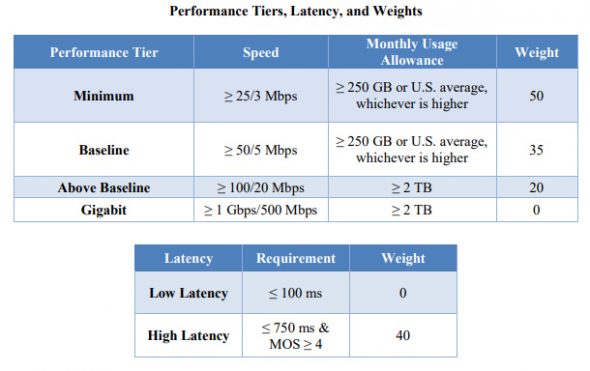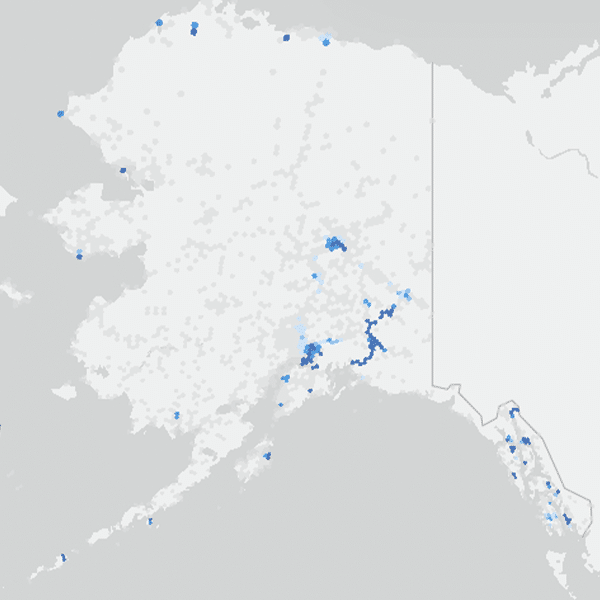 The details of the Rural Digital Opportunity Fund (RDOF) auction proposal that the FCC will vote on later this month are quite similar to those of the Connect America Fund CAF II auction – a reality that is not surprising, considering that the CAF II auction was generally considered to be successful. There are several key changes, however, as Telecompetitor noted after reviewing the RDOF order, which was released to the public this week.
The details of the Rural Digital Opportunity Fund (RDOF) auction proposal that the FCC will vote on later this month are quite similar to those of the Connect America Fund CAF II auction – a reality that is not surprising, considering that the CAF II auction was generally considered to be successful. There are several key changes, however, as Telecompetitor noted after reviewing the RDOF order, which was released to the public this week.
The changes, which we will outline here, impact the weighting system that will be used to prioritize bids to provide higher-speed, lower-latency service with higher monthly usage allowances. In addition, the changes impact areas eligible for the auction.
Speed Tiers: The Weighting System
The weighting system that was used for the CAF II auction was successful in spurring service providers to commit to deploying higher speeds. Even though the minimum speed that providers were required to deploy was 10 Mbps downstream, more than half of the locations that had winning bids in the auction were slated to gain service at speeds of at least 100 Mbps, including 19% slated for gigabit service. And more than 99% were slated for service at download speeds of at least 25 Mbps.
In establishing the weighting factors for the RDOF, the FCC seems to have kept these results in the rearview mirror, while also considering increased bandwidth demand and improvements in technology that have occurred since CAF II was planned.
Most importantly, the RDOF order calls for the minimum speed target to increase to 25 Mbps downstream/ 3 Mbps upstream.
An initial draft of the RDOF that circulated within the FCC in August called for three speed tiers – a 25/3 Mbps tier, a 100/20 Mbps tier and a 1 Gbps/ 500 Mbps tier. The final RDOF order that was made public this week adds an additional 50/5 Mbps tier and the weighting factor for the 100/20 Mbps tier was adjusted upwards from 25 to 35 to make room for the new tier.

The commission is also getting more ambitious about the monthly usage allowance.
When the commission first circulated a draft of the RDOF order in August, the monthly usage allowance for 100 Mbps and 1 Gbps service was set at two terabytes (TB) or the U.S. median, whichever is higher. But for 25 Mbps service, the target allowance was just 150 gigabytes (GB) or the U.S. median.
The latest version of the RDOF, however, raises the monthly usage allowance for 25 Mbps service to 250 GB or the U.S. median. The new 50/5 Mbps tier also has a 250 GB usage allowance, which will increase if the U.S. median rises above that level.
Latency Weighting
It’s not clear how successful the weighting factor for latency for CAF II was.
That weighting factor essentially made satellite providers’ bids less competitive in comparison with those of terrestrial providers, but that didn’t stop ViaSat from being one of the biggest winners in the auction. It’s difficult to make any definitive statements about the impact of the weighting factor, however, without knowing details about anyone that may have bid against ViaSat or about where ViaSat may have bid and lost.
Whatever the reasoning, the commission plans to raise the weighting factor for high-latency bids from 25 to 40. The net result is that providers committing to deploy lower-latency (i.e., terrestrial) service should have a bigger advantage against satellite providers in comparison with what occurred in the CAF II auction.
Areas Eligible for Auction
In comparison with CAF II, the RDOF order uses a bit different approach toward areas eligible for auction.
Areas eligible for the CAF II auction included unserved areas where the incumbent price cap carrier declined to deploy service at the level of support calculated through an FCC cost model. But certain unserved areas were not included in the support offer to the incumbents or in the auction because the cost model estimated that they could be served for a cost of $52.50 or less per month.
Noting that some of these areas still have not received broadband, the RDOF order calls for the $52.50 threshold to decrease to $40. Tribal areas were slated to have their threshold reduced by 25%; accordingly, the new threshold for those areas is $30.
The new 25/3 Mbps target speed also will expand areas eligible for RDOF funding to include locations that weren’t eligible for CAF II because they already had service at 10/1 Mbps but that don’t have 25/3 Mbps service. The commission wants to prioritize areas lacking 10/1 Mbps service, however.
The commission plans to do this by further decreasing the support thresholds for those census block by an additional 25% to $30. As the order explains, this will have the effect of raising the support cap for these blocks to $222.50.
Phase I vs. Phase II
I had some rather harsh words this week for the FCC’s RDOF plans regarding the commission’s plan to make the majority of funding available in the first of two funding rounds. My concern was that the commission doesn’t know how many locations will be eligible for the second phase because of well documented problems with broadband availability data.
It’s worth noting that the RDOF order acknowledges the uncertainty about the second phase requirements.
According to the authors of the order, “commenters generally supported the proposed budget” but “several commenters suggested that the size of the budget may be insufficient to serve all the unserved locations.”
Those commenters requested that the commission reassess the adequacy of the budget after Phase I, and the authors state that: “We agree that it may be appropriate after the Phase I auction, when we know the areas eligible for Phase II and how many unserved locations will be eligible for Phase II within those areas, to reassess the total amount of funds available for Phase II and expect to revisit this issue at that time.”


